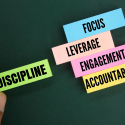The Gadget Era: How to Maintain Eye Health?
 In today's world, it's rare to find someone who doesn't use gadgets. Whether it's a smartphone, tablet, e-reader, or laptop, we spend a significant part of our day reading, typing, drawing, or watching movies on these devices. While these tools have made our lives more convenient, they have not been kind to our eyes. How do gadgets impact our vision, and what steps can we take to protect our eye health? Read on to find out!
In today's world, it's rare to find someone who doesn't use gadgets. Whether it's a smartphone, tablet, e-reader, or laptop, we spend a significant part of our day reading, typing, drawing, or watching movies on these devices. While these tools have made our lives more convenient, they have not been kind to our eyes. How do gadgets impact our vision, and what steps can we take to protect our eye health? Read on to find out!"Pseudo-Myopia": Maintaining the Right Distance
Scientific evidence suggests that human eyes have evolved over centuries. However, the modern visual demands we place on them are overwhelming. In recent years, the number of people with eye diseases has increased significantly. It's estimated that over 300 million people globally have poor vision. A major contributing factor to this is the prolonged use of computers and reading from screens on smartphones, e-readers, and tablets.
Spending hours staring at a glowing screen can lead to "pseudo-myopia" or accommodative spasm. This condition occurs when the eye muscles responsible for focusing on images struggle to perform their task, resulting in blurred vision. Additionally, there is a belief that daily screen use can exacerbate genetic myopia.
Dry Eye Syndrome: From Redness to Conjunctivitis
Extended gadget use can also lead to dry eye syndrome. Normally, a person blinks about 18 times per minute, but this rate drops to 2 times per minute when looking at screens. This decrease causes the tear film to dry out and thin, leading to the eye compensating by increasing blood flow to the conjunctiva, the transparent tissue covering the eye. This results in red, watery eyes and a sensation of grit and burning.
Nutrition for Eye Health
Proper nutrition, along with vitamins and specific dietary supplements, plays a crucial role in maintaining good vision. Here are some essential vitamins for eye health:
Vitamin A
Found in carrots, onions, liver, green peas, tomatoes, cottage cheese, and lettuce. The antioxidant beta-carotene in vitamin A helps maintain sharp vision.
Vitamin C
Present in citrus fruits, sauerkraut, blackcurrants, and rosehips. This vitamin ensures blood flow to the vessels and capillaries of the eye and protects against harmful short-wavelength rays.
Vitamin E
Available in butter, vegetable oil, potatoes, nuts, spinach, grains, and legumes. Vitamin E is a powerful natural antioxidant that helps prevent age-related vision problems like cataracts.
Lutein and Zeaxanthin
These active substances are found in dark green vegetables and fruits, whole grain bread, and eggs. The natural dietary supplement Amrita "Lutein Complex" is rich in lutein and bilberry, enhancing visual acuity and supporting eye health in conditions like cataracts, increased intraocular pressure, and myopia.
Expert Advice: Doctor’s Recommendations
Ensure all gadget screens are LED-lit.
Place devices like smartphones or tablets on a table when in use. Avoid watching videos on a moving car’s headrest-mounted MP3 player. Use a stable surface for your laptop instead of your lap.
Keep your smartphone screen at least 30 cm away from your face, computer monitor at 60 cm, and television screen at 3 meters.
The monitor screen should be perpendicular to the light source. Use additional soft lighting over your workspace in dim conditions.
Every half an hour, take a break from the screen and look into the distance. This simple exercise helps maintain vision. Occasionally close your eyes for two to three minutes to relax the eye muscles, restoring the sensitivity of the receptors responsible for sharpness and brightness.
Apart from these rules, there is another recommendation: when reading text on a monitor, avoid staring intently at the image and blink more often.
Final Thoughts
While gadgets simplify our tasks and add excitement to life, they can be harsh on our eyes. Dear readers, we hope our tips and recommendations help you use your favorite devices without harming your eyes. And remember, flip through paper books more often and give your eyes a rest! Stay healthy!









